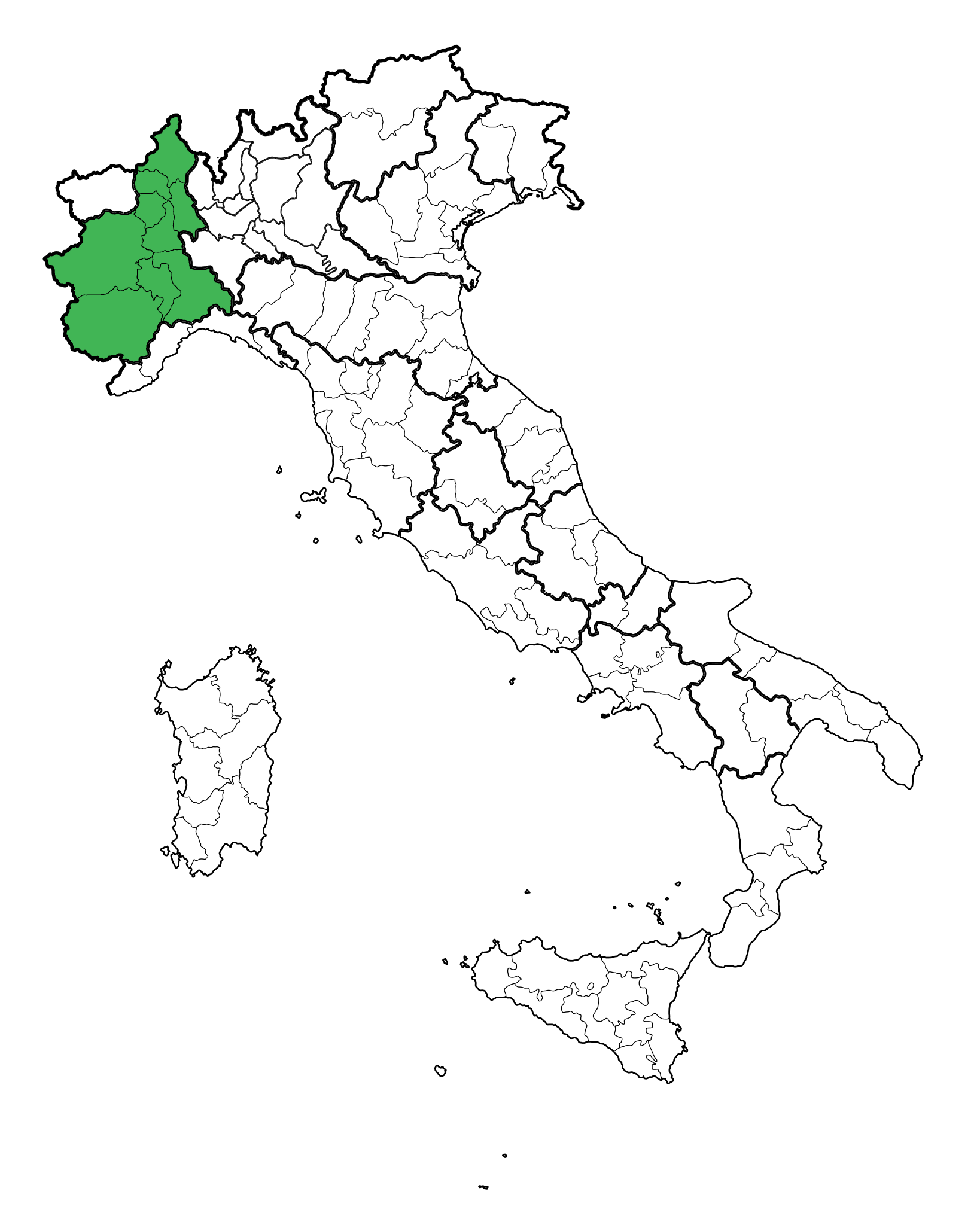
/pjemˈonte/
- Arneis
- Baratuciat
- Bussanello
- Cortese
- Erbaluce
- Moscato Bianco
- Nascetta
- Timorasso
- Albarossa
- Avanà
- Avarengo
- Barbera
- Becuet
- Bonarda
- Brachetto
- Chatus
- Dolcetto
- Freisa
- Grignolino
- Nebbiolo
- Pelaverga Piccolo
- Pelaverga Grosso
- Quagliano
- Ruché
- Piedmont is renowned for producing some of Italy’s most prestigious wines, notably Barolo and Barbaresco, both made from the Nebbiolo grape. These wines are highly esteemed for their complexity, aging potential, and the distinctiveness of their terroir.
- Piedmont’s diverse terroir encompasses a range of soil types, altitudes, and microclimates, offering ideal conditions for cultivating a variety of grape varieties. From the limestone-rich soils of Barolo to the sandy, calcareous soils of Gavi, each subregion contributes unique characteristics to Piedmontese wines.
- While Barolo and Barbaresco steal the spotlight, Nebbiolo is also used to produce other notable wines in Piedmont, such as Nebbiolo d’Alba and Roero. These wines offer a more approachable expression of Nebbiolo while still showcasing the grape’s characteristic flavors and structure.
- Ghemme DOCG
- Gattinara DOCG
- Barbera d’Asti DOCG
- Roero DOCG
- Nizza DOCG
- Asti DOCG
- Brachetto d’Acqui DOCG
- Alta Langa DOCG
- Dogliani DOCG
While Barolo and Barbaresco steal the spotlight, Nebbiolo is also used to produce other notable wines in Piedmont, such as Nebbiolo d’Alba and Roero. These wines offer a more approachable expression of Nebbiolo while still showcasing the grape’s characteristic flavors and structure.
Piedmont boasts diverse soil types, including calcareous marl, sandstone, clay, and limestone. Each soil type imparts distinct characteristics to the wines grown in the region, adding layers of complexity and terroir expression. For example, the calcareous soils of Barolo contribute to the structure and longevity of the Nebbiolo wines produced there.
The combination of diverse geography, elevation changes, and soil compositions results in significant terroir variation within Piedmont. From the rugged terrain of the Langhe to the alluvial plains of Asti, each subregion offers unique growing conditions that shape the character of its wines.
Visual Profiles:




- Lorem ipsum dolor sit amet, consectetur adipiscing elit. Ut elit tellus, luctus nec ullamcorper mattis, pulvinar dapibus leo.
- Lorem ipsum dolor sit amet, consectetur adipiscing elit. Ut elit tellus, luctus nec ullamcorper mattis, pulvinar dapibus leo.
Visual Profiles:




- Total Production: 2.580.000 Hectolitres
- White Wine: 40%
- Rose Wine and Red Wine: 60%
